DIY putting green - cost, how-to and pics of my project!
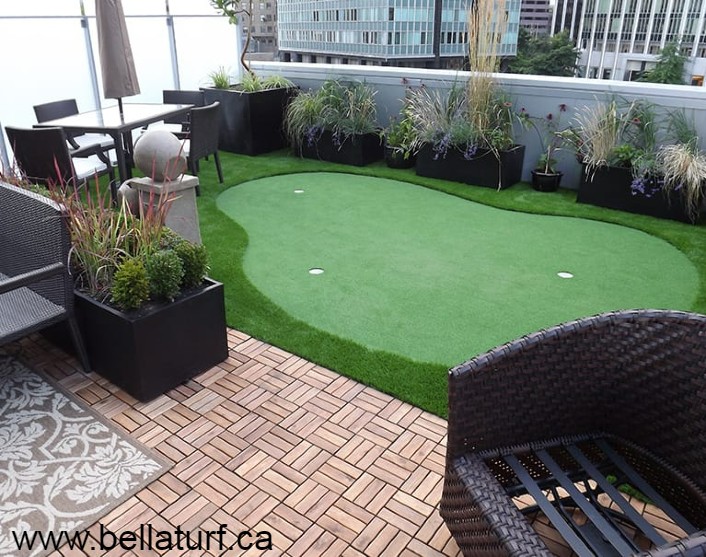
So, you want to improve your short game and having a putting green at home is a great idea ... I can vouch for that having carried out a DIY putting green installation of my own ... with a twist - at the other end of my putting area I have a net to hit full shots into.
In this article, I'll show you what I installed in my garden, the total cost of the DIY putting green project and how it's worked out a couple of years down the line.
Your first decision: Natural Grass vs. Synthetic putting greens:
I personally think you're unlikely to get a decent putting surface with natural turf unless you've got a considerable amount of time and skill yourself or the resources to hire a professional green keeper on an ongoing basis.
Here's a video that lays out what it'll take to install and maintain a real putting green.
Sounds like hard work, right...?
I've been on a few DIY backyard putting greens with "real grass" - they might look great and seem like a good idea, but the quality of the putting surfaces were always disappointing.
I suspect the owners underestimated the amount of maintenance they'd need (remember they mow the greens at your golf course several times a week) and you always run the risk of losing your green to animal damage, disease or frankly just your own laziness / neglect.
A synthetic surface will give you consistent quality of roll and need minimal maintenance, so my advice is: Forget natural grass and look up your local synthetic grass warehouse to see what you can get from them.
How much does a DIY putting green cost?
Anything from $1,200 to $30,000+.
The size of your putting green will determine the cost. Synthetic turf and all the other materials you need cost by the square foot or square metre, but here's a guide to the average cost for a DIY build:
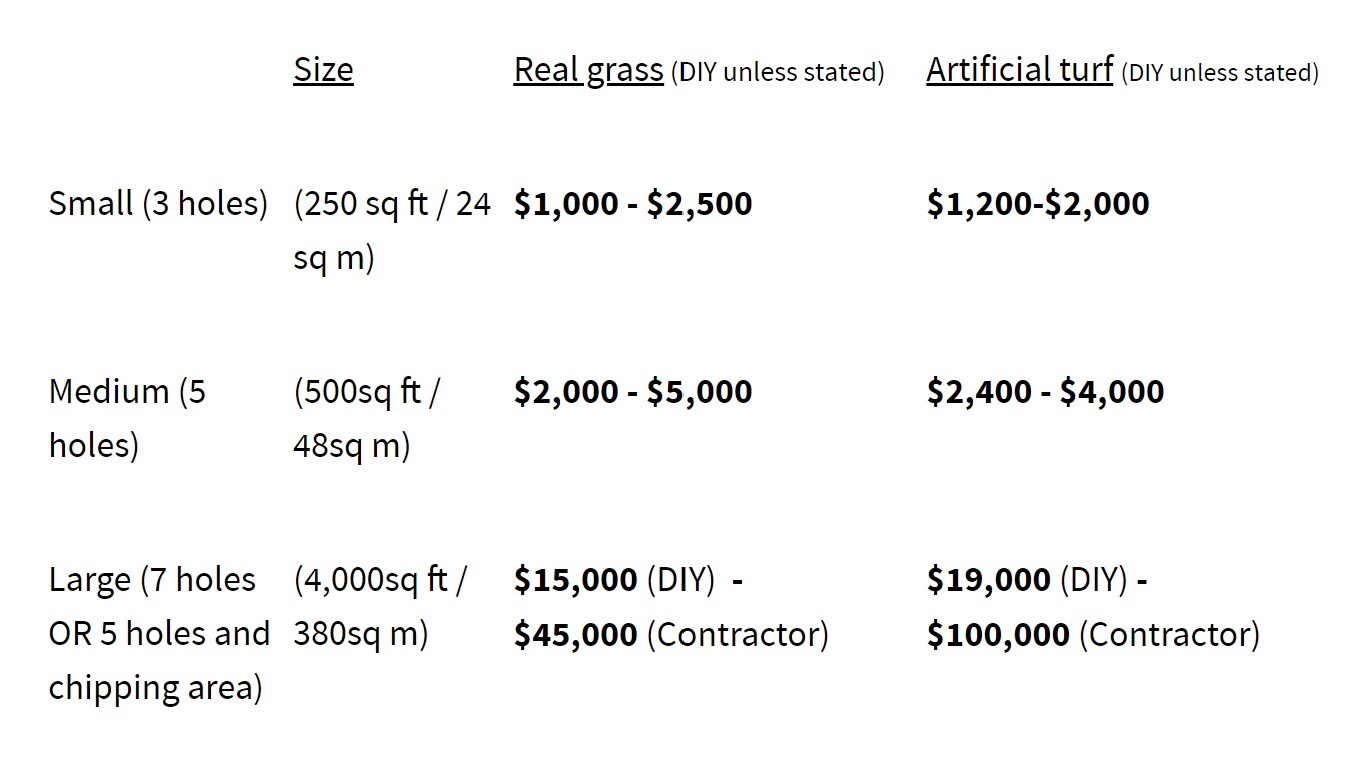
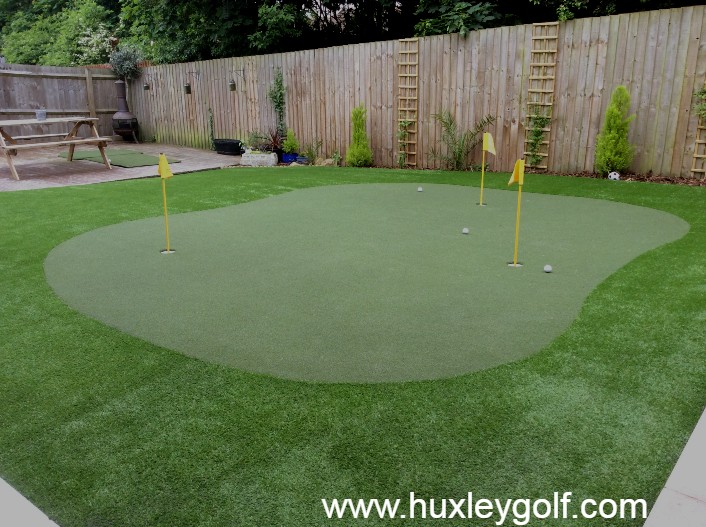
Are artificial putting greens worth it?
Obviously that depends on who's asking. If you're a time-starved but avid golfer like me, then yes.
I find that I use mine the night before I play and it gives me a lot of confidence on the greens the next day.
They're excellent for drilling your stroke and understanding the speed at which the ball goes into a hole, which is a big benefit over an indoor putting mat, even with an effective artificial hole like a Putt Out Trainer.
My kids love the putting green too and have spent quite a bit of time playing on it, but be careful not to leave pre-teen children unattended - we've had "accidents" when one child whacked another with a putter... not pretty!
Another excellent benefit has been the fun I've had with friends on our putting green after a few drinks. An impromptu putting competition in the comfort of your own backyard is a joy I hadn't expected.
How do you build a DIY putting green?
If you're want a flat surface and good roll, then you've got to be prepared to put in the work and do it patiently. You'll definitely want to plan your green design out on paper and I would recommend you do some calculations to work out what volume of materials for the base.
The most useful Youtube video I used to walk me through the step-by-step process of artificial turf installation was the one below:
I followed the instructions on this to the letter and here are the images of what I ended up with.
As you can see I decided to build a hitting net at the bottom end of my DIY backyard putting green - I wanted to be able to practice as much as possible in the space I had available. It gives you a bit of a driving range feel, which - combined with a mobile launch monitor means you can do some long game practice here too.
How do you prepare the ground for a DIY putting green?
In order to achieve proper drainage and a smooth surface, you have to dig down and install:
- A layer of aggregate - crushed granite works best... this is what they use as road base foundation material
- A layer of sand
- A weed barrier membrane (available from any hardware store - Home Depot etc!)
Compact each layer as you go with a whacker plate. You can hire one of these by the day - 24 hours was enough for me to do the necessary work on my 250sq ft (25sq m) space.
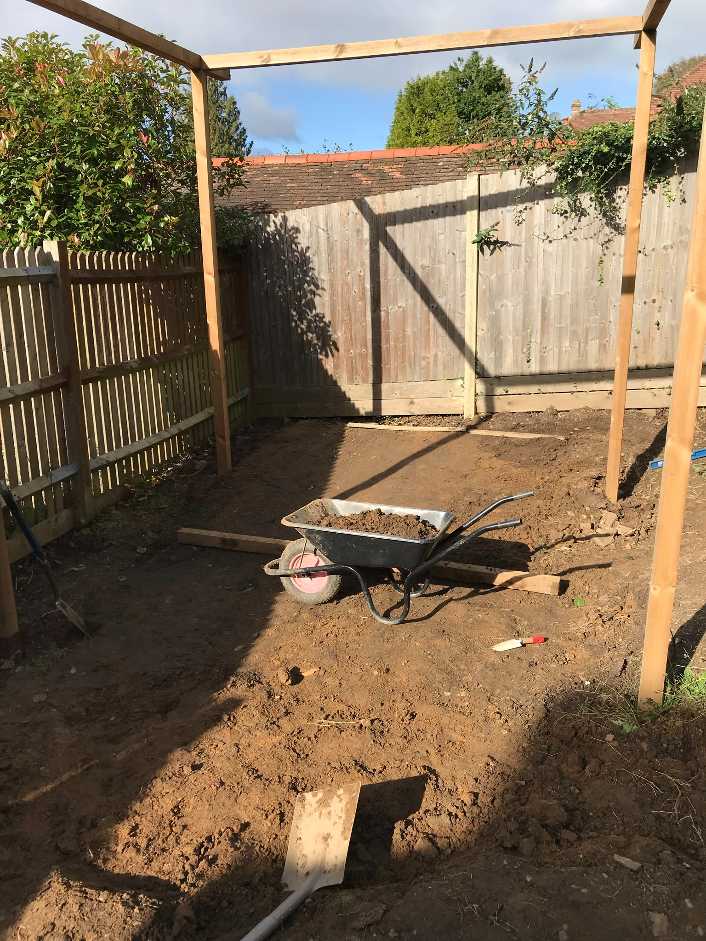
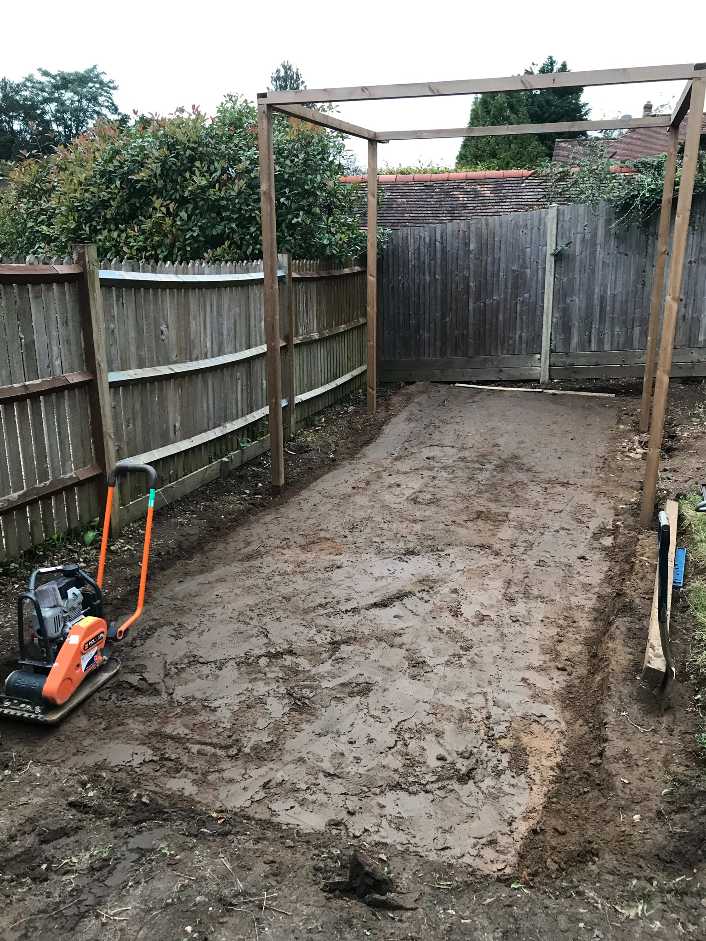
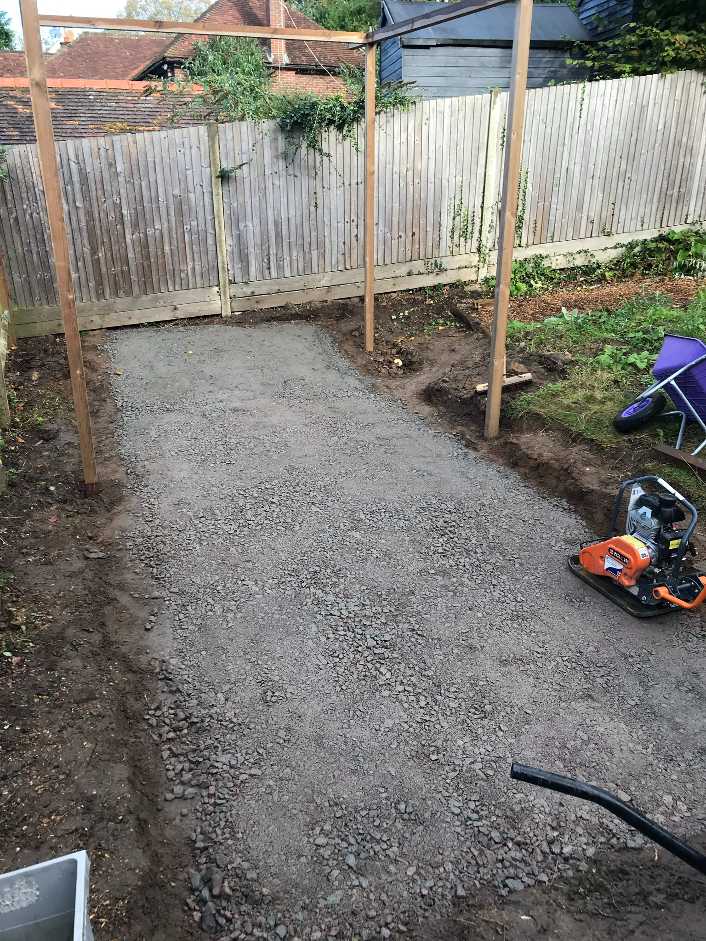
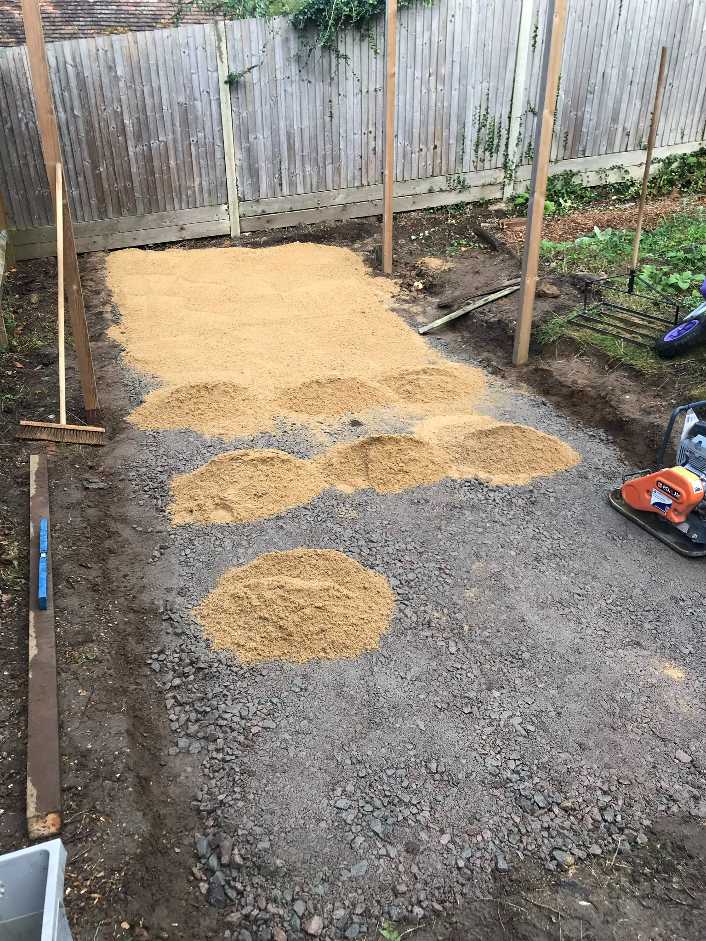
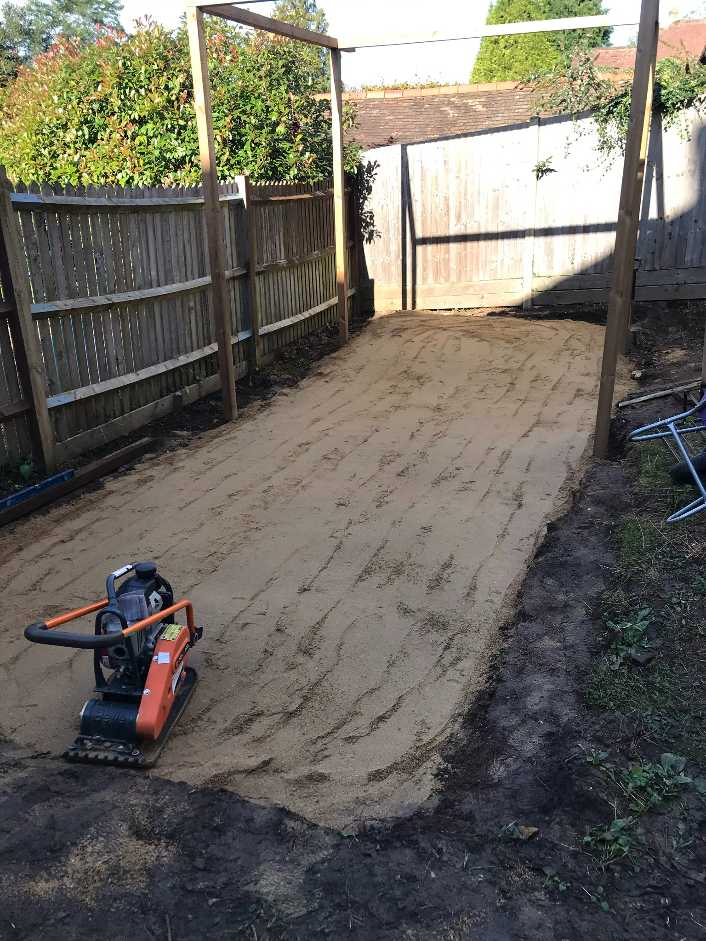
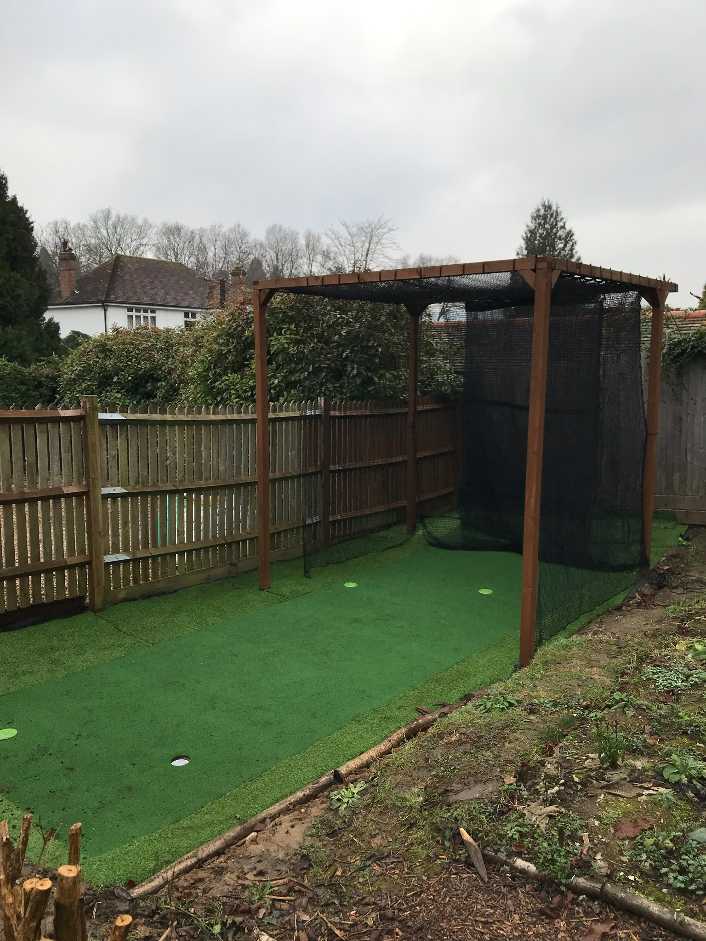
What kind of sand goes under an artificial putting green?
You'll need two types of sand for your green project:
- Orange construction (aka builder's / cement) sand for the base layer under your green
- Washed sports sand to top dress your putting surface to make sure the golf ball runs smoothly over the
Do you really need both?
Yes - they do completely different things. Construction sand has square grains which lock together to form a tight bond, PGA sand has round grains, designed NOT to lock together and therefore allow water to pass more easily through.
Putting in the holes
Now this bit is not easy! Once you've worked out where your hole locations are going to be, dig a hole into the base layers which is large enough to accommodate a golf hole. Once it's sunk into the foundation, mix up some thick cement to hold the cup in place and bring the area around the cup up to the level of the foundation again.
As the cement sets, move the cup repeatedly to ensure it doesn't stick the cup in place for good. You'll need to move it around and raise and lower it to help you cut through the turf once it's installed - again with a utility knife.
Cutting the turf layer to the exact shape of the hole obviously has to be done after you've installed both the weed barrier membrane and the putting green surface (the next step), but to finish off with the hole installation - you basically have to cut through the artificial turf and cut round the inside of the hole to make sure the hole putting green mat is the same size and exactly the same position as the hole you've sunk into the foundation.
This is not easy and I advise you to watch the video above carefully before attempting it.
How to install the green surface and fringe grass
Once you've built and compacted a solid foundation for your green (see the video above for precise how-to instructions), the next step in the installation process is to lay pieces of putting green grass out and cut the shape of the putting green desired.
Cutting the strips of turf is easy enough with a utility knife (again the video above shows you how), but it's best to go carefully, you don't want to ruin a whole strip of artificial grass by cutting in the wrong place. That's the quick way to cost yourself a lot of money.
If you do have some small rough edges, it's no big deal - you can lay a fake grass fringe around the edge of your putting green and allow this fringe turf to overhang the green very slightly to hide any unsightly cuts.
You secure the green surface and cuts of fringe with landscape spikes to hold it all in position. You'll need to install a spike about every 4-5 inches.
What's the best material for a putting green?
The market leaders in artificial putting green surfaces are Huxley and Southwest Greens. Both focus mainly on commercial putting green and practice facilities, but if you have a large enough backyard project, they might be interested. They both make a big play of the fact that balls landing on their greens react the same way as balls on natural turf.
Bella Turf also offer a putting green kit which gets great reviews, so they'd be worth checking out. Putting green kits have the benefit you get everything you need to install your putting green without having to measure and calculate your requirements.
For my project, I was limited by budget, so I bought everything I needed separately. I found the turf strips from a local company I found online. There are quite a few sellers on eBay and you don't need to rule them out on the grounds of quality, as everyone I spoke to was happy to send through a sample square of turf material so you can choose the best one for you.
Why put sand on a DIY putting green?
Putting sand on my DIY putting green was a crucial step in making it play well. Even though I tried my best to create a perfectly flat surface, and was at least working on a relatively flat location, it wasn't perfectly flat and smooth.
After brushing in a couple of bags of washed sports sand, the roll of the ball improved a lot. Not quite to the level of PGA tour greens, but perfectly acceptable.
My DIY putting green and net project

As you can see from the pictures, I built my putting green / full shot net in limited space. It sits between my veggie patch and a fence.
In general, I'm really pleased with it. It's been a great addition to our garden and I've used it to warm up both my long game and my putting where I haven't touched a club for a few weeks.
The ability to see the ball going into a hole is a vast improvement over putting indoor on a mat.
My kids love it too.
What I'd do differently if I did it again
Not that much... The full shot net which I built out of weathered timber has worked out perfectly.
I rushed one element of the putting green installation and that was the second (sand) layer of the foundation and put too much down. This means that the surface became a tiny bit uneven.
I wish I had watched the video above more carefully... they seem to get the amount of sand on the base layer just right - enough to fill any imperfections in the crushed granite, but not so much to make a sand layer in and of itself.
I also would have positioned the hole on the left near the upslope into the hitting net differently. I desperately wanted 4 holes so everyone in my family could play a Bob Rotella putting practice game in which you all putt to the next person's hole in a square.
When we play this game it's great fun, but that left hand hole is basically impossible to put to, so nobody succeeds there.
Other than that I'm pretty pleased with my handiwork!
Is there any maintenance with an artificial putting green?
Yes - a little. It's not that bothersome, but I wish I'd known about it at the start instead of thinking it was an entirely fit-and-forget item.
In the 18 months since mine has been down I have had to:
- Lift the putting surface and the weed barrier membrane to remove worm casts (obviously the worms don't know that there's no way to reach daylight in that part of my garden any more!)
- Reposition the putting surface to realign with the holes
(whether I didn't secure my putting green surface well enough or whether this has to do with the fact that I effectively hit full shots off my green surface into the net, I don't know - hopefully this won't be a problem for you). - Brush and vacuum the surface
(Reading this now, I sound mad to be doing getting a vacuum out on a part of the garden, but on artificial surface which has such a uniform pile, any garden debris on the green surface makes your ball jump off line dramatically and needs to be removed - the vacuum has been the easiest way I've found to do it - just hope the neighbours don't spot me!)
Are artificial putting greens any good?
In a word, yes. They're not perfect - you do get some strange breaks on putts which you wouldn't expect on a natural green, but for a bit of practice, especially on short putts they're fine.
The more expensive Huxley / Southwest Greens surfaces are also excellent for chipping and pitching onto.
One artificial green I use quite regularly behaves very realistically for both chipping and putting. I think it's a Huxley.
It's just like a firm summer green all year round - you can spin pitch shots on it, but you always get a bounce before the ball comes to a halt, just like on a fast summer green. Whether you'd become conditioned always to expect that reaction on a green and couldn't work with other green surfaces is the only worry I would have.
Does a DIY putting green affect the value of your home?
According to a real estate agent friend of mine, a niche sports installation at home can either excite or annoy a potential buyer. If the prospective buyers are golf enthusiasts, they'll likely be attracted to the property and in that sense it will add to the value of the house.
If your hopeful buyers aren't golfers, they'll only see the cost involved in removing your putting green from the garden and therefore it'll lower the price.
Share your pictures if you're building an outdoor putting green DIY style!
Submit photos and details of how the project went
Useful links:
www.southwestgreens.com - high-end putting greens US
www.huxleygolf.com - high-end putting greens UK
www.bellaturf.ca - putting kits
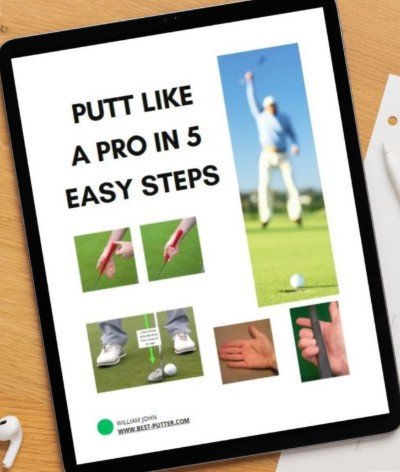 |
Return to the Best-Putter.com homepage
